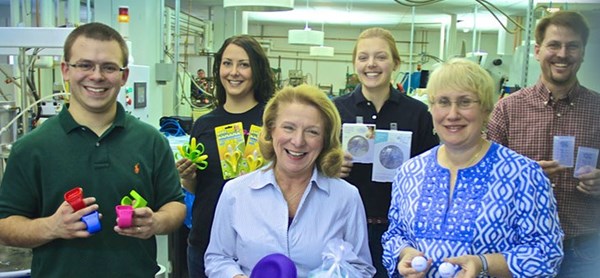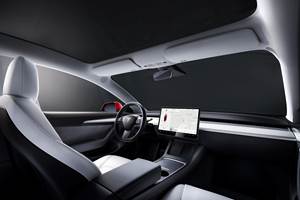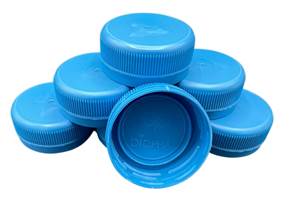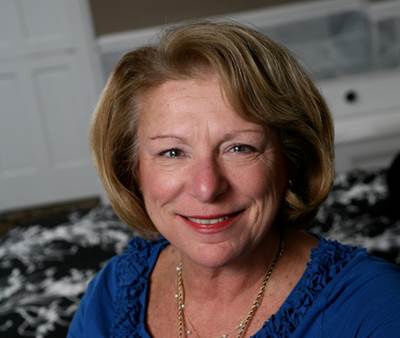What It Takes (And Doesn’t Take) To Be a Medical Molder
Medical molders absolutely must have a clean room and be ISO certified, right? ‘Wrong,’ says Extreme Molding’s Joanne Moon.
Drawing from her nearly four decades in the medical market, Joanne Moon shared some unexpected insights into what it takes—and doesn’t take—to be a medical molder. Speaking at the Molding 2015 Conference (June 16-18; Chicago), Moon’s presentation was informed by her stints all along the medical supply chain, from time with an OEM and a device maker to experience at a material supplier and, these days, a custom molder.
What she learned over that time is that many things which are taken as undeniable prerequisites to being a medical molder are far more malleable then you might think. Moon noted that when she and her partner, Lynn Momrow-Zielinski, founded Extreme Molding in 2002, they consciously made the decision not to be ISO certified—a decision they have not regretted.
“Remember a few years ago, when you’d see these big signs everywhere, saying a company is ISO certified,” Moon said, “well you don’t see that as much anymore.” In addition to the time and expense involved initially, the process continues to weigh on companies as a “huge administrative burden” that never seemed worthwhile to Moon (who freely acknowledged that in some markets, like aerospace and automotive, suppliers might not have a choice).
“With ISO you have an auditor come in who basically takes your watch and tells you what time it is,” Moon joked. “I don't need someone else to come in and tell me how to do reporting.” Extreme Molding is extremely meticulous when it comes to process control. When the company first started, Moon said they simply downloaded a quality manual template, but since then have expanded and enhanced that original document and process, adopting FMEA (failure mode and effects analysis) processes.
Today it maintains strict guidelines for validations, including first article inspection, change control, incoming inspection, material review boards and more, with reviews on a daily basis.
“Make sure you undertake ISO for the right reasons,” Moon told the crowd, noting that in Extreme’s 13 years, only one prospective customer walked away because the company wasn’t ISO certified, and that company was simply going through a supplier validation checklist.
To Cleanroom Or Not To Cleanroom
With regards to cleanrooms, Moon noted that at Extreme Molding the company has gotten by with a white room. “A lot of times, people build elaborate cleanrooms, putting in all this time and effort,” Moon said. “We use a white room—a clean area—but no special air control.”
Moon noted that many companies which go the whole nine yards—airlock, booties, gowns, hair nets—are often engaging in overkill since often times components will be assembled into finished devices, sterilized and packaged elsewhere.
“For common medical molders, full clean rooms are totally unnecessary,” Moon said, noting that more important is monitoring, reporting and traceability. “You must have traceability of materials and product,” Moon said. “You need lot numbers and every work step, from start to finish,” with accuracy of lot number and raw material at each workstation, including reconciliation of good and bad product counts.
“If you say you had 1000 bad parts, but only find 950, they'll want to find that last 50,” Moon explained.
Commit or Get Out
“If medical is not at least 35% of your total revenue, don't do it.” That was the simple advice Moon had for Molding 2015 attendees who might be attracted by the margins—Moon said Extreme doesn’t accept jobs with a gross margin of less than 35%—without fully appreciating the commitment.
“If medical is not your core 911±¬ÁÏÍø, don't dabble in it,” Moon said. “Unless your plants and manufacturing management team have a full appreciation of what they're getting into, I would not do medical lightly.”

Related Content
For Extrusion and Injection-Blow Molders, Numerous Upgrades in Machines and Services
Uniloy is revising its machinery lines across the board and strengthening after-sales services in tooling maintenance, spare parts and tech service.
Read MoreImpacts of Auto’s Switch to Sustainability
Of all the trends you can see at NPE2024, this one is BIG. Not only is the auto industry transitioning to electrification but there are concerted efforts to modify the materials used, especially polymers, for interior applications.
Read MorePaperless ‘Smart Factory’ Based on Automated Production Monitoring
Tier 1 automotive molder’s home-built production-monitoring and ERP systems, designed for “the little guy,” boost its efficiency rating and profits.
Read MorePHA Compound Molded into “World’s First” Biodegradable Bottle Closures
Beyond Plastic and partners have created a certified biodegradable PHA compound that can be injection molded into 38-mm closures in a sub 6-second cycle from a multicavity hot runner tool.
Read MoreRead Next
Extreme Molding’s Joanne Moon Reflects on 38 Years
Nearly 40 years in medical plastics working in extrusion and injection with stops at an OEM, a startup, a material supplier and finally a custom molding operation give Joanne Moon a very unique perspective on the intersection of plastics and healthcare.
Read MoreBeyond Prototypes: 8 Ways the Plastics Industry Is Using 3D Printing
Plastics processors are finding applications for 3D printing around the plant and across the supply chain. Here are 8 examples to look for at NPE2024.
Read MoreFor PLASTICS' CEO Seaholm, NPE to Shine Light on Sustainability Successes
With advocacy, communication and sustainability as three main pillars, Seaholm leads a trade association to NPE that ‘is more active today than we have ever been.’
Read More














